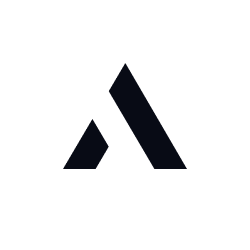Snowflake makes moving your data to the cloud quick and easy. But hosting sensitive data in Snowflake can add a layer of complexity due to governance and security concerns that could slow down or even grind your project to a halt.
Ask yourself these questions to find out if ALTR can help control and secure your sensitive data in Snowflake, moving your data projects along and getting to Snowflake value more quickly:

1. Do you know which Snowflake data is sensitive or regulated?
When adding new data or new databases, it can be difficult to really know what you’re bringing in. If you have hundreds or thousands of databases or millions of rows and columns of data, how can you know which have sensitive data? Column names? Not so fast – some databases use indecipherable codes as column names and there’s no guarantee the column name matches the data in the column. Manual review? Sure, if you don’t want to do anything else for the rest of your life. But if you don’t know which data is sensitive or regulated, how can you safeguard it?
2. Is your Snowflake data classified into types like social security # and email addresses?
Once you find all that sensitive data (wherever it its), the next step is to get it categorized and tagged so that you can automatically apply the appropriate privacy and access policies. Maybe only HR should have access to employee SS #s or maybe only marketing actually needs customer date of birth. Are you going to manually go in and grant or deny access to those columns or rows for each user? What a headache. If you’re doing this, keep reading.


3. Can you easily see who has accessed your most sensitive Snowflake data in the last 2 weeks? When and how much?
After you have that data classified and tagged, you want to be able to see who accesses it – when and how much. If you don’t have this in an easy-to-understand dashboard, it makes comprehending normal data usage very difficult and identifying anomalies and outliers just about impossible. Not to mention, complying with audit requests for regulated data access becomes another onerous, time-consuming task.
4. Can you create column and row-level access controls on sensitive Snowflake data without using SnowSQL or other code?
Developers do love coding, but is writing (and worse, updating!) access controls the best use of your time in Snowflake? What do you do when new data is added? Or new users? What if you want to hand off maintenance to someone on the governance team or a line of business data owner because they set the policy? Do they have to learn to code SQL? Unlikely.


5. Can you grant access to new users or new data in less than 10 minutes in Snowflake?
As more and more companies strive to become “data-driven” and more and more people across the company understand the value data analytics can provide, requests for data access can explode. While in the past it may have been one or two requests a week, it can easily grow to hundreds or thousands in the largest companies. Granting data access to new users can quickly become a full time job. Is that what you signed up for?
6. Can you apply sensitive data masking in Snowflake with just a few clicks?
Snowflake provides powerful native capabilities for masking data, but the catch is that you need to know SQL to use them. This means coders whose time would be better spent on other, more high value activities, spend time writing and rewriting masking policies. Wouldn’t it be nice to have an interface over those native features you can activate and update in just a few clicks. (*hint* ALTR has this).
7. Can you limit the amount of sensitive Snowflake data someone can download per minute, per hour or per day?
Privileged users and credentialed access present a significant risk to PII, PHI and PCI. Even if you trust the user, credentials can be lost, stolen or hacked. And even trusted employees can become disgruntled or sense an opportunity. It’s better to assume that credentials are always compromised and put a system in place that ensures even the most privileged user can’t do too much damage.

8. Can you see and control the data Tableau users are accessing?
Snowflake and Tableau make a powerful combination for data analytics. Instead of granting users access to data directly to Snowflake, many organizations choose to offer it through a business intelligence tool like Tableau. This comes with setting up Tableau user accounts for each, but to save time/maintenance they sometimes use a single Tableau service account to access Snowflake. So from a data governance perspective, without some additional help, admins can’t see who is accessing what data.
9. Can you prove that data governance policies are working correctly?
When your data governance is part of a compliance program focused on meeting regulatory requirements, it’s not enough to set up the policies. You have to prove that they’re working correctly and no one who shouldn’t have access did access the data. Can you prove this, without spending hours or weeks sifting through data access logs?

10. Do you spend less than 2 hours per week monitoring data access, revising access policies and adjusting data controls?
Why should you have to pull all this info together manually by scanning through text access logs or go in and update SQL access policies line by line? These activities are all very critical to governing and securing your data in Snowflake but they’re really just administrative tasks. Is this why you became a DBA or data engineering? Probably not. What you really want to do is pull in new data streams, offer up new analytics opportunities and find ways to extract more value from your data. Why don’t you do that instead?
Bonus question: Can you set up all of this in less than 60 minutes, for free?
If you answered “No” to even one of these questions, ALTR’s Free plan can help you today. Unlike legacy data governance solutions that take 6 months to implement and cost at least 6 figures to start, we built our solution to simplify data control and security for busy data architects, engineers and DBAs so you can focus on getting value from data without disruption. In just 10 minutes you can control 10 columns of sensitive data in Snowflake and get visibility into all your data usage with role-based heat maps and analytics dashboards!


